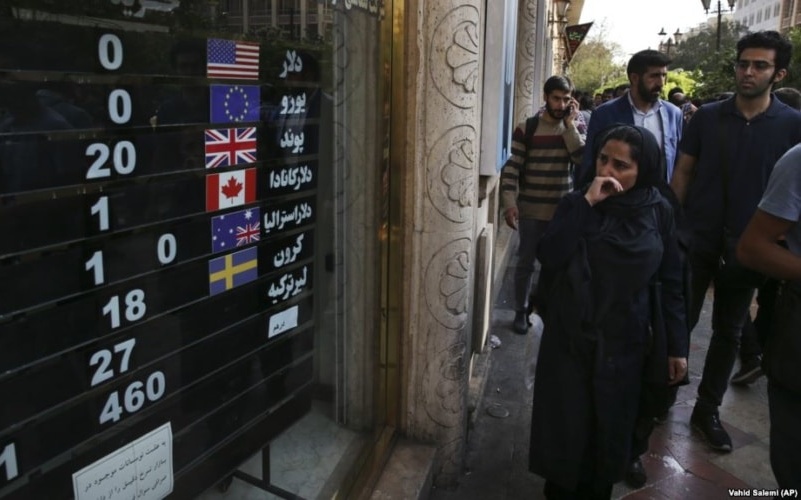Iranians in front of a currency office in Tehran (Vahid Salemi/AP)
Iran’s weakened currency is sliding again, after Government and Central Bank intervention brought a three-month recovery checking a historic drop.
The rial opened Tuesday at 131,000:1 vs. the US dollar, compared to 110,000:1 on December 31. The currency has fallen by more than 7% since Friday.
Last year the rial plummeted more than 70%, from an already historic-low of 45,000:1 in January to more than 190,000:1 by the summer.
The Government and Central Bank then took a series of emergency measures, including changes to the official exchange rate and the injection of foreign reserves to prop up the rial. The steps prevented a further shock after the imposition of comprehensive US sanctions on November 5.
However, inflation — which had been brought down to single digits by the Rouhani Government — has resurged to almost 40% per year.
Analysts say that the renewed drop is due in part to uncertainty over Iran’s vital economic links, notably with Europe.
At the start of February, the European Commission announced the launch of a limited Special Purpose Vehicle to bypass US sanctions for trade in Iranian oil and other commodities and goods.
But Iranian officials rejected the SPV because of “humiliating conditions”, such as the Europeans’ criticism of Iran’s missile program and activities in the Middle East. They also objected that the SPV initially covers only imports of food, medical supplies, and pharmaceuticals by Iran.
Meanwhile, Iran’s Expediency Council has again postponed a decision on accession to the Financial Action Task Force and an international convention against terrorist finance and money laundering.
The Rouhani Government has pressed for the bill, and it has been approved by Parliament. But the Guardian Council has blocked implementation, with hardliners concerned that the measure could affect Iran’s links with groups such as Lebanon’s Hezbollah and Palestine’s Hamas and Islamic Jihad.
The FATF meets this week to review the situation. If Iran’s banking and financial regulations are found to be in violation of organization’s conventions, then the Islamic Republic could be blacklisted.
Responding to the currency drop, Central Bank Governor Abdolnasser Hemmati said on Instagram, “The Central Bank will take necessary measures if needed.” He did not specify those measures.
Prices on goods such as Iranian-made vehicles have risen 10% in the pst few days.
The situation is likely to add to inflation in the housing market, with analysts already warning of a shortage of residences.
Eghtesad Online says Iran is short of 4,000,000 units. It estimates that 1 million new units are needed each other, but only 300,000 to 370,000 houses are being built.

